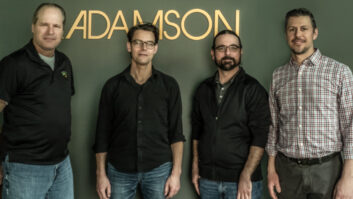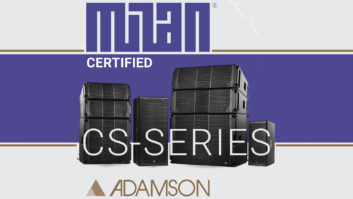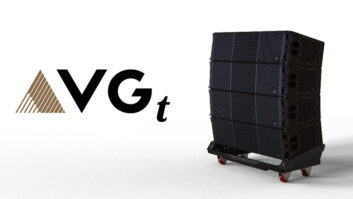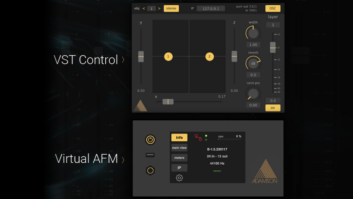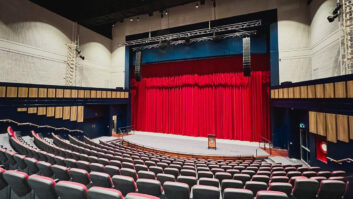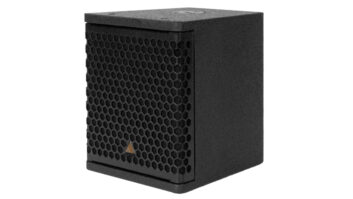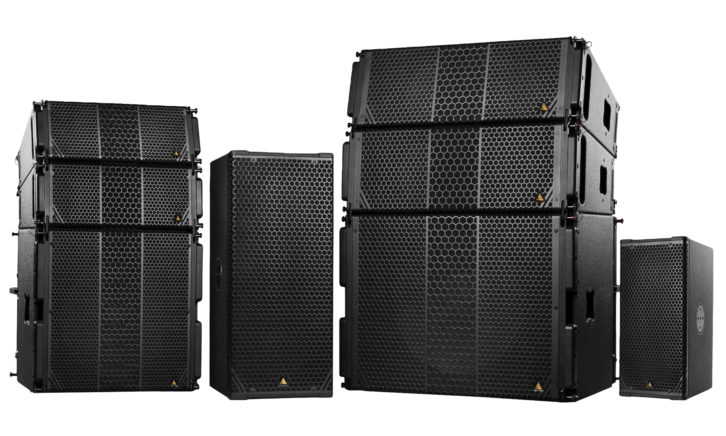
When Adamson Systems Engineering introduced its S-Series of line array and point-source loudspeakers in 2015, the company knew that an upgrade path to networked audio and control was on the horizon. Fast-forward to 2020, and Adamson has released its latest line of powered intelligent loudspeakers, the CS-Series.
Expanding upon the proven performance of the S-Series, the CS-Series offers a formidable combination of onboard amplification and DSP, built-in networking with redundancy, and Milan-ready AVB connectivity. CS-Series loudspeakers share the same form factor and sonic signature as the S-Series, and all S-Series enclosures can easily be user-upgraded to CS-Series.
One of the main incentives of purchasing CS-Series products or upgrading from the S-Series is the ability to use Adamson’s CS (Control Suite) software, available for Windows and Mac OS. CS Software is a single platform combining system design and prediction with deployment, tuning and monitoring—a departure from the typical model of using separate software for design/prediction and routing/control/diagnostics. Different tabs in CS Software guide a user from system design and simulation, to optimization, routing, control, metering and system diagnostics for each individual box in a system.
The optimization module uses a proprietary algorithm to tailor the response of a line array to the space in which it is deployed. The implementation adds no additional latency to the array while providing a high degree of conformity across the listening area.
The CS-Series consists of five full-range loudspeakers and two subwoofers, all using Class D amplification. The CS7, CS10 and CS10n are full-range, two-way line array enclosures with an efficient sound chamber engineered to produce a slightly curved wavefront that increases dispersion in the vertical plane, while avoiding high-frequency loss in the far field.
The CS7 employs two 7-inch Kevlar Neodymium transducers and a 3-inch high-frequency compression driver, generating a dispersion pattern of 100 x 12.5 degrees (H x V). Big Brother to the CS7 is the CS10, housing two 10-inch Kevlar Neodymium drivers and a 4-inch compression driver. Dispersion angle of the CS10 is 110 x 10 degrees. The CS10n specs similarly to the CS10 but yields a narrower dispersion pattern (80 x 10 degrees) for use in applications where increased horizontal control is required to maintain intelligibility—reflective spaces, for example.
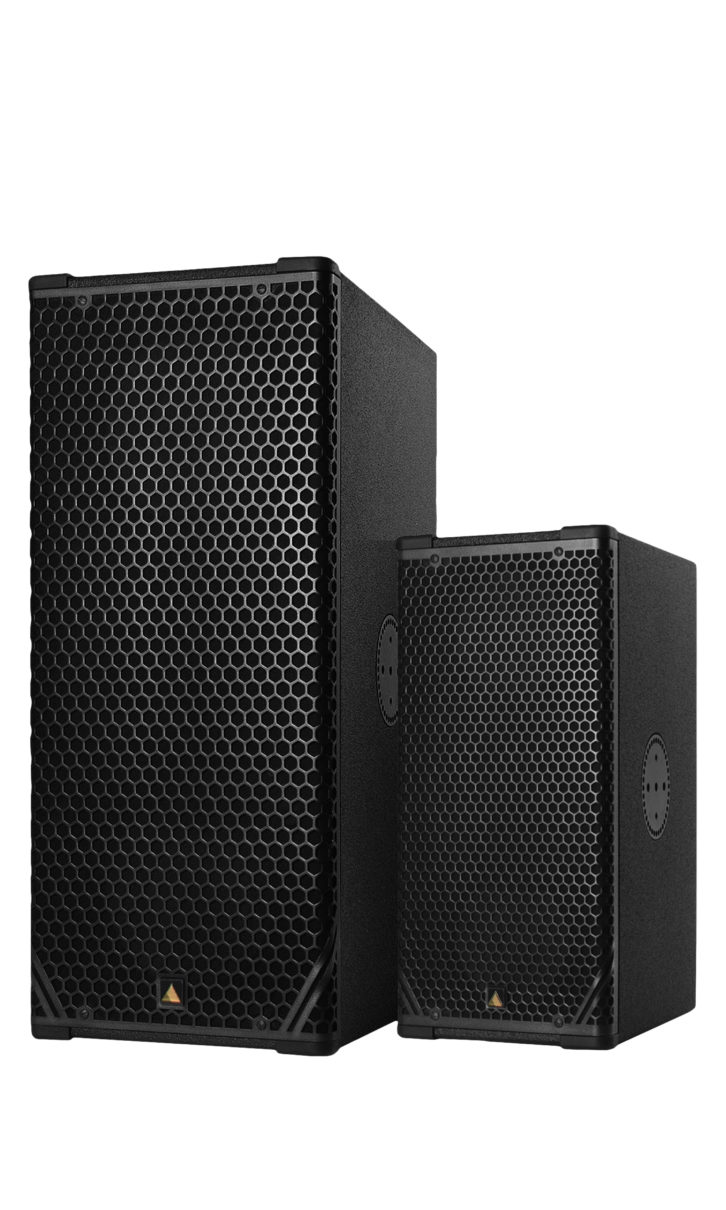
The CS7p and CS10p are point-source enclosures with the same driver complement as their line array siblings. Both models may be ordered with a choice of 70 x 40-degree or 100 x 50-degree (H x V) waveguide for the compression driver, which may be rotated 90 degrees to modify the high-frequency dispersion pattern. The dipole arrangement of the CS7p and CS10p produces a stable polar response, enabling them to be easily paired as a means of increasing horizontal coverage and overall output level.
The CS-Series includes two front-loaded subwoofers: the CS118 and the CS119. The CS118 uses a single Adamson ND18 18-inch Kevlar Neodymium woofer with a 4-inch voice coil for high power handling capability and was designed for integration with the CS7 and CS7p. Intended as a companion for the CS10, CS10n and CS10p, the CS119 houses one ND19 19-inch Kevlar Neodymium Driver, producing maximum SPL up to 138 dB and low-frequency response extending down to 30 Hz.
Complementing the CS-Series’ audio capabilities is some very clever implementation of audio networking, control and monitoring. As you’d expect, CS-Series loudspeakers have analog audio I/O on balanced XLR connectors, but they also feature Milan-ready AVB connectivity, and integrate with several new Adamson rack products developed specifically for the CS-Series.
The CS Gateway is an analog or digital I/O that also functions as a Milan-ready Ethernet switch. It combines a 16 x 16 audio matrix with 16 channels of DSP, furnishing eight XLR inputs and eight XLR outputs capable of routing either 16 channels of AES/EBU digital or eight channels of analog audio I/O. In addition to providing connections for LAN A and LAN B networks, it can accept or generate an AVB stream to enable streaming of digital data.
The CS Network Distribution System serves as a centralized network and analog distribution I/O, enabling users to send redundant audio and control to CS-Series loudspeakers using a single network cable. Unlike most networked loudspeakers, every CS-Series speaker can function as a network “endpoint,” so the LAN can be sent from the NDS to a speaker, and then daisy-chained from that speaker to the next one—eliminating the need to create separate home runs from the NDS to each CS-Series cabinet, and greatly simplifying the connection process.
The NDS can accept opticalCON and etherCON connections from LANs A and B, and two AVB switches combine the LANs into a single redundant networked audio cable. That single connection also carries a backup analog audio signal that can break out to the analog input at the speaker, if desired.
Available in 220 and 110 VAC versions, the Power Distribution System simplifies mains distro while ensuring that all CS-Series speakers receive sufficient power. The PDS features multiple circuits with powerCON and Socapex power output connectors, and a data port connection to the CS network provides power consumption and power output monitoring data.
The CS Bridge replaces the existing network infrastructure employed in Adamson’s E-Rack. This enables the CS-Series to be integrated with existing E-Racks by converting dual-LAN, Milan-ready AVB signals to AES/EBU and providing six channels of DSP per unit.
Adamson CS-Series loudspeaker cabinets are constructed from marine-grade birch plywood and offer a variety of rigging options. A CS Upgrade Kit allows any existing S-Series cabinet to be quickly converted to its CS-Series counterpart simply by removing four screws, connecting the CS Jackplate with the provided wiring connectors, and switching the front grille.
